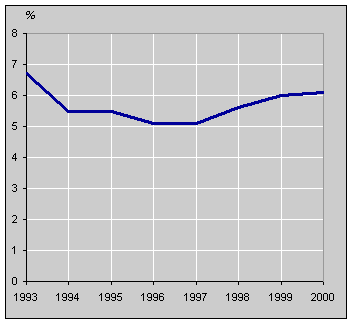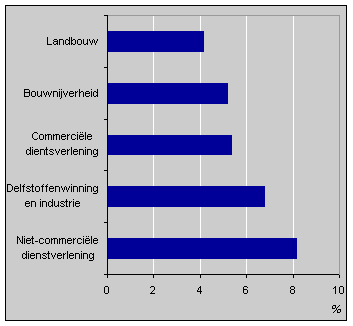Sick leave rates still rising

Sick leave rates (including maternity leave) in the private sector rose to 6.1% in 2000, the third successive year that they increased. This 0.1 of a per cent point rise on 1999 reduces the difference with 1993, when it was 6.7% to just 0.6 of a per cent point.
Following the introduction of a law to push back sick leave rates in 1994 Wet Terugdringing Ziekteverzuim, many companies took measures to reduce the incidence of workers reporting in sick. This seemed to have an effect: in that year sick leave dropped sharply, to 5.5%. Subsequently, in March 1996 the Sickness Benefits Act ((Ziektewet) was changed leading to a further fall in absence caused by sickness, to 5.1%.
By 1998, however, sick leave rates were an average 5.6%, back at the level of before the change in legislation in 1996. In 1999 they continued upwards, and reached 6.0%.
Sick leave in the private sector

Highest absence rates in health care and welfare sector
There are substantial differences in the number of hours lost because of sickness between sectors of industry. The highest rate, 8.2% on average, is in non-commercial services, mainly in the health care and welfare sector (over 9%). Agriculture has the lowest rate of sick leave, at 4.2%.
Sick leave in the private sector, by sector of industry

More hours lost at large companies
There is a strong correlation between company size and sick leave. Large companies had average rates of 8.1% in 2000, an increase of 0.3 of a percent point on 1999. Sick leave at companies with fewer than 10 employees was at the same level last year as in 1999, namely 3.3%.
John Kartopawiro